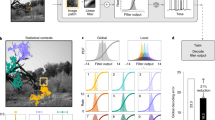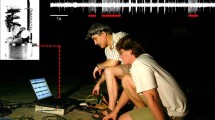Abstract
Shaped by evolutionary processes, sensory systems often represent behaviorally relevant stimuli with higher fidelity than other stimuli. The stimulus dependence of neural reliability could therefore provide an important clue in a search for relevant sensory signals. We explore this relation and introduce a novel iterative algorithm that allows one to find stimuli that are reliably represented by the sensory system under study. To assess the quality of a neural representation, we use stimulus reconstruction methods. The algorithm starts with the presentation of an initial stimulus (e.g. white noise). The evoked spike train is recorded and used to reconstruct the stimulus online. Within a closed-loop setup, this reconstruction is then played back to the sensory system. Iterating this procedure, the newly generated stimuli can be better and better reconstructed. We demonstrate the feasibility of this method by applying it to auditory receptor neurons in locusts. Our data show that the optimal stimuli often exhibit pronounced sub-threshold periods that are interrupted by short, yet intense pulses. Similar results are obtained for simple model neurons and suggest that these stimuli are encoded with high reliability by a large class of neurons.
Similar content being viewed by others
References
Balakrishnan R, von Helversen D, von Helversen O (2001) Song pattern recognition in the grasshopper Chorthippus biguttulus: The mechanism of syllable onset and offset detection. J. Comp. Physiol. A 187(4): 255-264.
Bialek W, Rieke F, de Ruyter van Steveninck RR, Warland D (1991) Reading a neural code. Science 252: 1854-1857.
Gabbiani F, Metzner W, Wessel R, Koch C (1996) From stimulus encoding to feature extraction in weakly electric fish. Nature 384: 564-567.
Harth E, Tzanakou E (1974) Alopex: A stochastic method for determining visual receptive fields. Vision Res. 14: 1475-1482.
Koch C (1999) Biophysics of Computation. Oxford University Press, Oxford, UK.
Machens CK, Stemmler MB, Prinz P, Krahe R, Ronacher B, Herz AVM (2001) Representation of acoustic communication signals by insect auditory receptor neurons. J. Neurosci. 21: 3215-3227.
Nelken I, Prut Y, Vaadia E, Abeles M (1994) In search for the best stimulus: An optimization procedure for finding efficient stimuli in the cat auditory cortex. Hearing Res. 72: 237-253.
Rieke F, Bodnar DA, Bialek W (1995) Naturalistic stimuli increase the rate and efficiency of information transmission by primary auditory afferents. Proc. R. Soc. Lond. B 262: 259-265.
Rieke F, Warland D, de Ruyter van Steveninck RR, Bialek W (1997) Spikes-Exploring the Neural Code. MIT Press, Cambridge, MA.
Römer H (1976) Die Informationsverarbeitung tympanaler Rezeptorelemente von Locusta migratoria (Acrididae, Orthoptera). J. Comp. Physiol. 109: 101-122.
Stanley GB, Li FF, Dan Y (1999) Reconstruction of natural scenes from ensemble responses in the lateral geniculate nucleus. J. Neurosci. 19(18): 8036-8042.
Theunissen F, Roddey JC, Stufflebeam S, Clague H, Miller JP (1996) Information theoretic analysis of dynamical encoding by four identified primary sensory interneurons in the cricket cercal system. J. Neurophys. 75(4): 1345-1364.
Wessel R, Koch C, Gabbiani F (1996) Coding of time-varying electric field amplitude modulations in a wave-type electric fish. J. Neurophysiol. 75(6): 2280-2293.
Author information
Authors and Affiliations
Rights and permissions
About this article
Cite this article
Edin, F., Machens, C.K., Schütze, H. et al. Searching for Optimal Sensory Signals: Iterative Stimulus Reconstruction in Closed-Loop Experiments. J Comput Neurosci 17, 47–56 (2004). https://doi.org/10.1023/B:JCNS.0000023868.18446.a2
Issue Date:
DOI: https://doi.org/10.1023/B:JCNS.0000023868.18446.a2




